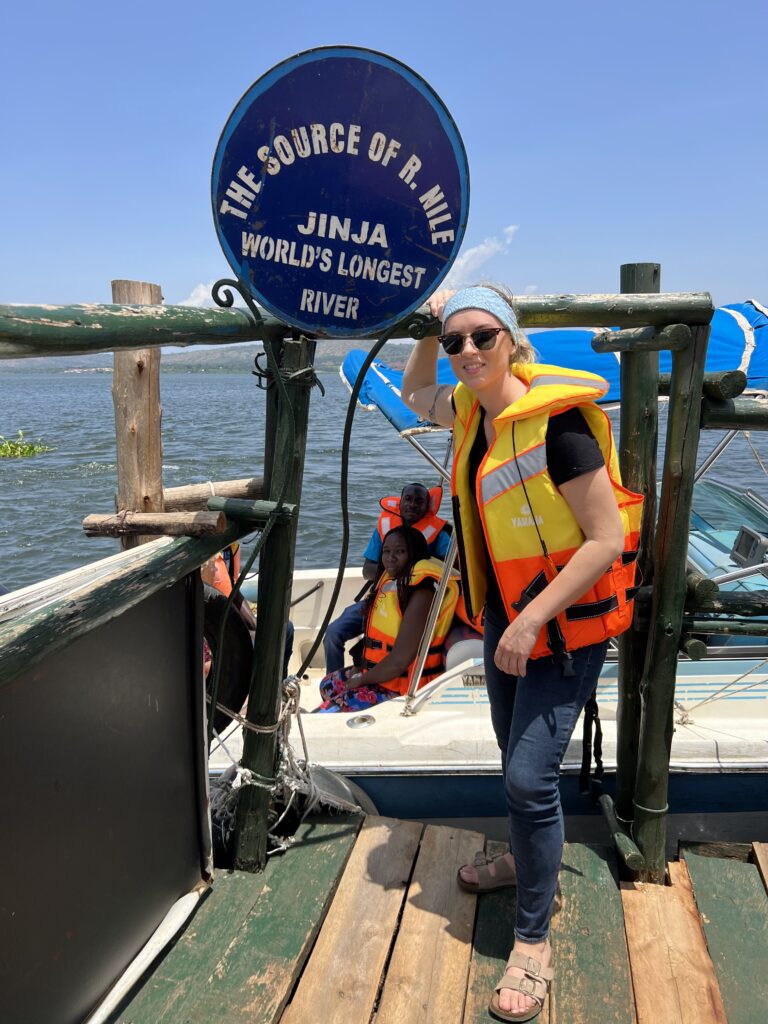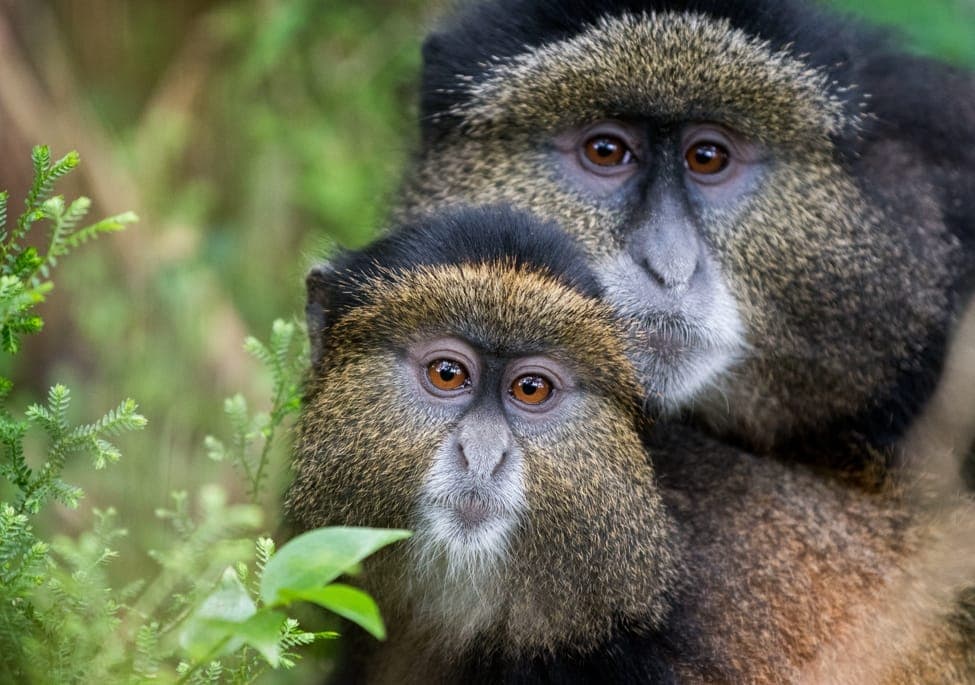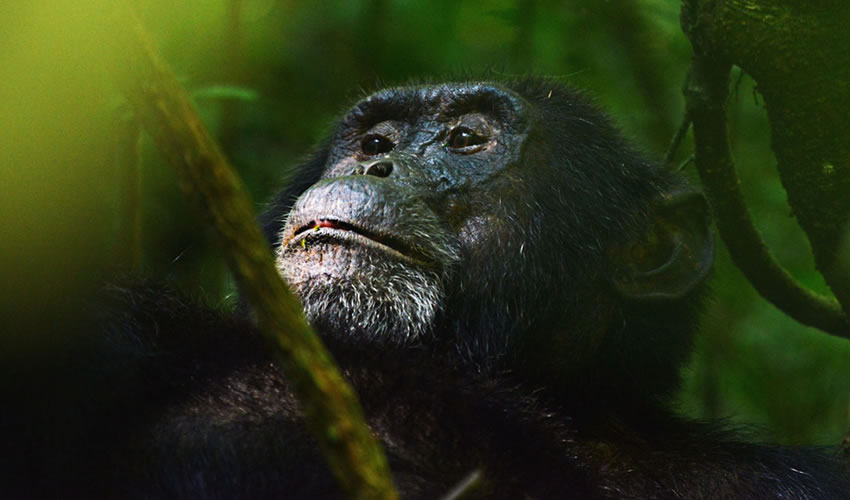Source of the Nile : The longest River Nile originates at the Source of the Nile, a famous landmark that draws many tourists to Uganda. The Greek word for valley, which the ancient Nile believed to be its source, gives rise to the well-known moniker “Longest River in the World.” The Nile has also had a significant impact on the history of the African nations. This is a true natural wonder of the African continent, beginning in Jinja, one of the more developed towns in Uganda and the continent’s northeast. It also happens to be one of Uganda’s most popular tourist spots.
The eastern Mediterranean Sea’s mouth is reached by the Nile, which rises from just north of the equator. With a length of 6,696 kilometres, the River is the longest river in the world. It has expanded to become an international river, draining its basin into over 11 nations, though the majority of its water is concentrated in Uganda and Egypt. Ethiopia, South Sudan, Kenya, Eritrea, Tanzania, Rwanda, Burundi, Democratic Republic of the Congo, and the Republic of Sudan are among the other nations.
The 3.4 million square kilometre Nile basin is divided into two main sections: the white Nile, which is shallower than the Bahr-el Arab rift and rises to a depth of up to nine kilometres, and the Sudan, which is divided into three regions: the plateau portion, the Sudan, and the central Sudan region. It is estimated that the Blue Nile is between five and nine kilometres deep. The natural water bodies known as the White and Blue Niles originate from Uganda’s Lake Victoria and Lake Albert. They also meet in Khartoum to form the base of the Nile, which is composed of cascades that run alongside the Egyptian Nile.
Though the Nile has several other major rivers that are known to flow from the south and north, and because it floods during the warmest season of the year, the Greeks and Ancient Egyptians were unable to solve the mystery. The Nile’s name is derived from the Greek Neilos and the Latin word “Nilus,” which means a valley or a river valley. The name of the ancient Egyptian river, Ar or Aur, means “Black” in history. This refers to the colour of the sediment the river carries during floods. Despite the fact that the Nile mud is so dark that it gave the region its original name, “Kemi,” which means “black” and denotes a dark action. The Nile, formerly known as Al-Bahr and Bahr or Al-Nile, is currently the nation of Egypt and Sudan.
History about the source of the Nile.
John Hanning Speke, the son of an armed captain in the West Country, is credited with discovering the Nile’s historical source on August 3, 1858. At the age of seventeen, he enlisted in the East India Company’s army in 1844. Later in 1854, he made the decision to travel to East Africa with Captain Richard Burton, who had returned the previous year as an Arab pilgrim with the express intent of seeing Mecca.
John Speke arranged for Burton to travel to east Africa once more in 1856, with arrangements made by the Royal Geographical Society. While on a tour to the inland part of the coast opposite Zanzibar in early 1858, he came across Lake Tanganyika. But after spending three months by the lake, Burton and Speke fell ill, forcing them to return to the coast and, more importantly, locate another body of water north of Tanganyika. Later in August, he described what is known as a vast expanse of the pale-blue waters of the northern side of the lake, which he named Lake Victoria because he thought it was the source of the Nile. Although it wasn’t an easy journey for either of them, in 1858 John Speke succeeded in finding the source of the Nile. Burton, however, found it hard to accept that Speke had actually found the source.
Though the Nile does not agree on the longest dispute of Kagera and thus the distant source of the Nile itself, Lake Victoria, the largest lake in Africa, is sometimes cited as the amazing source of the Nile. However, the lake is known to be fed by other rivers of the Kagera River, which pours into Lake Victoria closer to Bukoba town in Tanzania.
The Nile, however, exits Lake Nyanza in Uganda at Ripon Falls, which is close to Jinja, the country’s largest town. From there, it flows 130 kilometres to Lake Kyoga in the north. The last section of the river is estimated to be 200 kilometres long. It begins at the lake’s western shores and travels first to the west before turning north just south of Masindi Port. From there, the river makes a good half circle to the east and north until it reaches Karuma Falls. The remaining portion flows through Murchison Falls to the west before reaching the northern shores of Lake Albert, where it expresses a notable river delta. Furthermore, it continues in the Albert Nile region of northern Uganda.
Although the source of the Nile is a fibrous place to visit, it is the main point where the Nile begins its long journey to the Mediterranean Sea. Visiting the Nile offers great sight-seeing of the world’s longest river and Africa’s largest white-water lake, as well as an abundance of exciting activities such as jet boating, bungee jumping, kayaking, swimming, horse riding, quad biking, and white-water rafting, among many more thrilling activities.
White water Rafting on River Nile Uganda
Uganda is renowned for being the “pearl of Africa” due to the plenty of natural wonders that can be found there, including the Nile’s source, which was found by John Speke in 1858 and has had a significant impact on the history of the nation. The Nile is the longest river in the world and is especially enjoyable for white water rafting.A year-round activity, white water rafting on the Nile is made possible by Uganda’s equatorial climate. White water rafting here is an incredible and unique experience, set apart from other warm water experiences by sunshine and less rainfall.Before visiting the breathtaking whitewater pools where one can take a breath-taking rest and swim while spotting various bird species and wildlife in this warmest place, the Nile rapids offer rafters an unparalleled thrill and enjoyment.
Bungee jumping
Among the numerous activities conducted in Uganda along the River Nile, this one is new. Bungee jumping offers a unique experience for those who feel the need to venture outside by allowing the traveller to kiss the vibrant Nile from a height of approximately 40 metres. It can be paired with other fantastic activities on your Uganda Safari Tours because it doesn’t take long.
Kayaking
The only way to fully enjoy the experiences on the Nile is to go kayaking. Other than that, kayaking is done at low water levels with a boat and double-bladed paddles that are pulled forward and backward to determine direction. While engaging in this thrilling activity, visitors can take in the breathtaking weather while kayaking the Nile and viewing the surrounding farmland, towns, and exotic birds feeding on the fish.
Swimming
It is possible to swim in Jinja’s River Nile because it is free of harmful animals like crocodiles and hippos, as well as other infectious diseases and bilharzia.
Horse Riding
Here at the banks of the Nile, on the trails that wind through agricultural land, and relishing your horseback ride through rural communities with kids snuggled in their seats while you breathe in the clean, fresh air of the natural world and avian inhabitants.
Quad Biking
In addition to being fantastic, quad biking is the only way to enjoy a beautiful afternoon in Jinja alongside the River Nile. As you ride through the countryside on your way to work, you may also meet typical Ugandans, some of whom are heading to their gardens while kids cheer you on. In order to partake in all these exciting activities, a traveller must schedule their trip to Jinja well in advance of their arrival in Uganda. Sweet Escape Tours and Safaris is able to organise your tour with proper attention, including booking accommodations with excellent amenities and much more.
Depending on the weather in Uganda, visiting the Nile River Source is best done throughout the year.
Where to stay:
The panoramic view of the River Nile is rewarding, and the source of the Nile River is surrounded by lovely accommodations. These include the Jinja Safari Camp, The Mansion Hotel, The Nile Anchor Palace, Al-Nisaa Hotel and Spa, Gately on Nile, Signature Hotel Apartments, Royal Park Hotel, Emirina Travel Hotel, Living Water Resort, Casa Mia Baliidha, Jinja Base Camp, The Nile Front Cottages, and many more lovely lodging options near the Nile. They range in price from luxury to mid-range.
The Source of the Nile is only a few kilometres from Kampala, the capital of Uganda; it only takes two hours and 12 minutes to get there via surface road through Lugazi.



